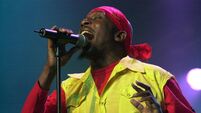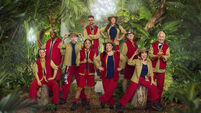A life on the land: The story behind a new book of images from Ireland's farming history
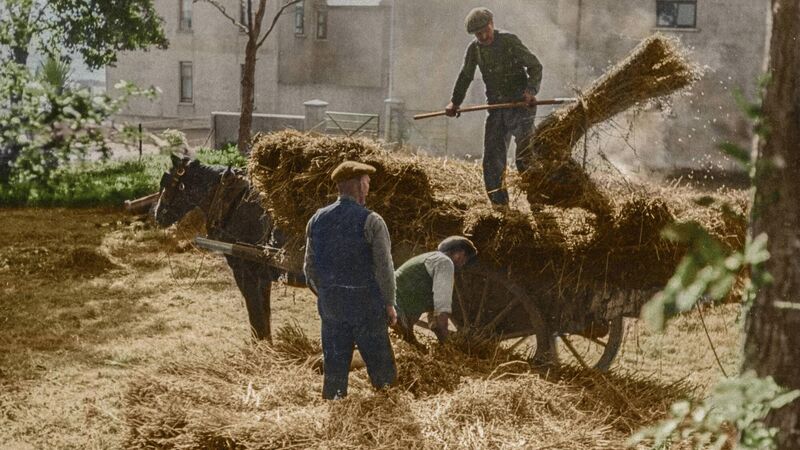
An elegiac scene from the Fermanagh countryside from around 1945
I was a townie, brought up in Ballydehob, yet I remember vividly the couple of miles I would travel in a horse and cart, clip-clopping out to visit a relative’s farm in Greenmount; on another occasion, harvesting hay in fields at Dunkelly, with Dunmanus Bay stretching below.
Then came the threshing — the big, wooden-clad threshing machine — and the wonderful meal laid out in the farmhouse afterwards.
All my subsequent life has been spent in cities, yet I, like many Irish people, carry fond memories of farming, even if most of us are only a generation removed from it.
My co-author, John O’Byrne, and I searched widely for photographs.
There were many in the National Library, and we were fortunate to receive others from generous private collections.
Surprisingly, the US Library of Congress holds thousands of images of Irish life, primarily on farms.
Most date from around 1900 and concentrate on peasants in homespun clothing, living in bare cabins.
Donkeys carrying creels of turf appeared repeatedly.
As I researched, it became clear there was a stark divide in late 19th-century Ireland: Those living on poor land, mainly along the Atlantic seaboard, endured absolute poverty, while people on more fertile land enjoyed reasonable houses and a secure way of life.
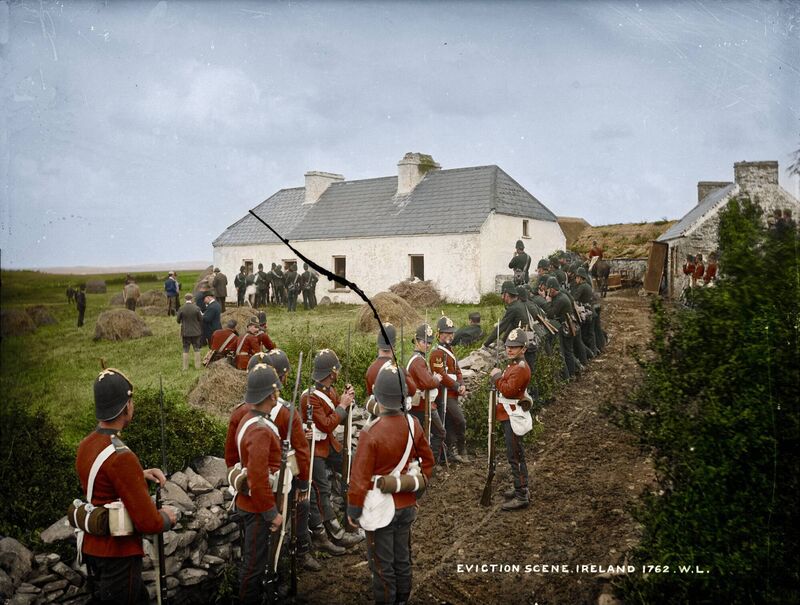
Then there were the evictions, which became a routine feature of post-Famine Ireland.
Yet the resultant land agitation had an impact in London and, by the end of the 19th century, land reform legislation was enacted, allowing Irish tenants to buy their land with the help of soft loans — the annuities.
Today, most Irish farmers own their land — a stark contrast with Britain, where just over half of farms are owner-occupied.
Of course, country life is about far more than cows, tractors, and donkeys.
There was truly dancing at the crossroads, the excitement of showbands, and the romance of the local ballroom.
Occasionally, Duffy’s Circus would visit, bringing a splash of colour to remote communities.
On dark, cold nights, some turned to distilling poteen — there is a photograph of gardaí proudly standing around a captured still.
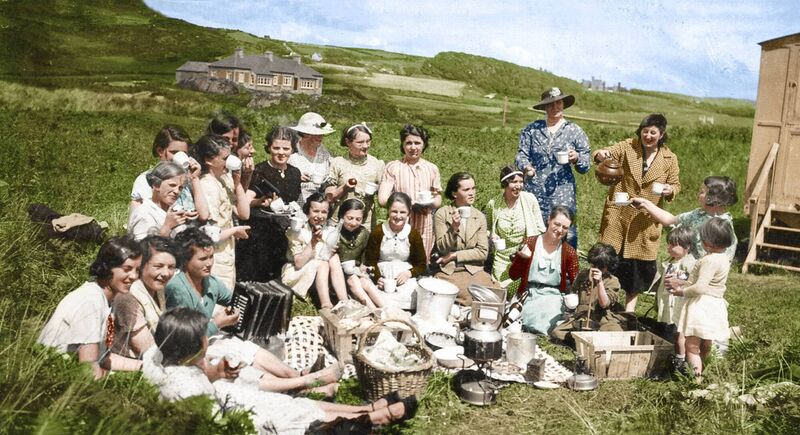
Some images I particularly like include an elegiac one of road bowling, an exuberant outing of the ICA to Owenahincha, and a threshing scene.
Religion was never far away from Irish country life; a photograph of the Angelus being said in a field recalls Millet’s famous painting.
Then there was emigration: A poignant image shows the islanders abandoning Inis Airc in 1960.
John O’Byrne assiduously colourised the images by hand, applying no AI.
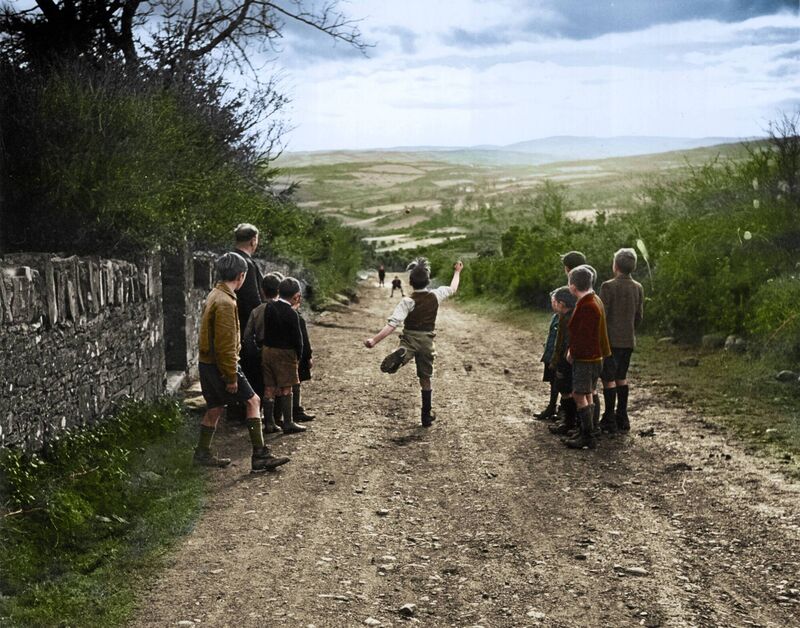
His expertise and deep knowledge brings the photographs to life, as exemplified by a Co Clare eviction image in which he was able to identify the various uniforms (and colours) of the RIC and the British Army.
When I wandered the fields of West Cork many decades ago, nobody had heard of the CAP or climate change.
Farming has changed radically since then, and today’s young farmers face new pressures.
Yet they are resilient, with a connection with the land, and will meet the future with the same determination as generations before them.
Within the covers of the book, you will walk back into the Ireland that nurtured all our roots.
In the first part, I was introduced to an Ireland recalled by my parents, grandmother and old neighbours, and in the second half, I walked back into an Ireland that I myself remembered.
And both unlocked memory boxes full of hidden treasures.
As I meandered through the pages, I recalled an old friend telling me that on his first reading of , he found himself looking out for his own memories, including minding chickens from the talons of the swooping hawk.
And he smiled with appreciation as he told me how delighted he was to discover that I too had remembered the hawk.
It was important for him that his memory was incorporated into my memories. And as you too go through the book you will find yourself looking out for remembered scenes or pictures painted for you by parents or grandparents. And they are all there.
In the book you walk into an art gallery where rare pictures of our past can be viewed and enjoyed. A treasure trove to be savoured in silence and later shared with appreciative friends.
The pictures of happy people, children and animals bring a smile to your face, but viewing the scenes of grinding poverty, evictions and the struggle for freedom chill your soul and bring an awareness of the price that our ancestors paid that we might now call this land our land.
Born in 1938 and growing up on a farm along the Cork–Kerry border, I absorbed a way of living that has now almost totally disappeared.
Yes, there was hard work and long hours, but also a closeness to nature with an unconscious absorption and appreciation of its blessings and beauties.
Working with the earth, as many gardeners know, brings peace of mind and contentment, the value of which is now being recognised by modern therapists.
I remember one evening when I was young, taking out a jug of tea with a wedge of brown bread to my father who had spent the day ploughing in a field at a far end of the farm.
As I walked in the gap, the sun was setting behind my father, his horse silhouetting them against the skyline.
I stood there transfixed, sensing that I had come on a scene beyond my understanding as the human, natural and divine blended harmoniously together.
To quote a now much-aspired-to ideal, we actually did then ‘live inside the gate’ as all our food was grown on the farm, and in the coming together to save the hay, cutting the corn and going to the bog and the creamery, the neighbours met and gathered in the meitheal system which created a ‘bonding’ when we did not even know the meaning of such a word.
Neither had we heard the term ‘organic farming’ but that is exactly what was going on.
Although the work was physically demanding, the way of life was kind to the natural world.
Every spring we waited for swoops of swallows to wing into the stable, piggeries and cow stalls, and begin reclaiming their old nests.
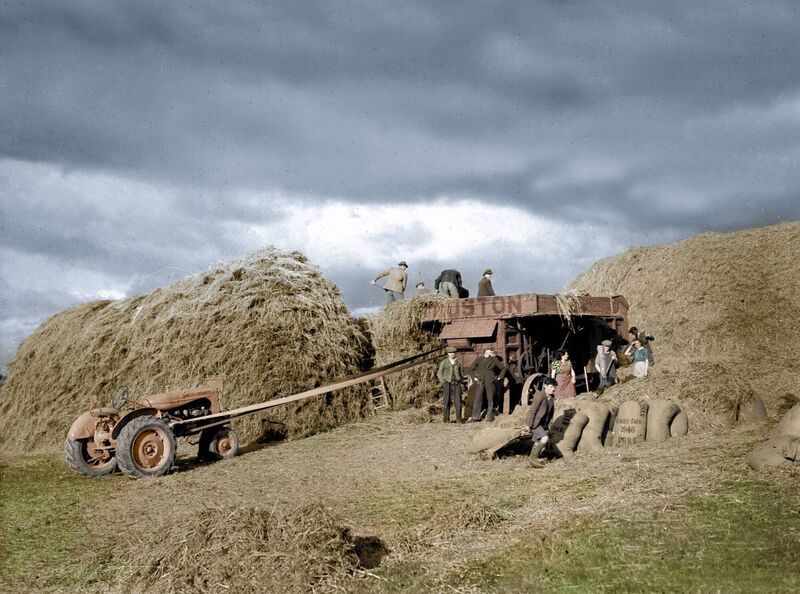
During summer, the call of the cuckoo echoed along the valley and at night we went to sleep to the sound of the corncrake.
Before my father mowed the hay he inspected the high meadow grass for nests and then left an uncut patch until the nestlings had flown.
He cautioned us back then about the need to care for nature and the wildlife on the farm, warning, ‘Wrong nature and we will pay a terrible price’. Prophetic words indeed.
Nature and the divine were interlinked and on Rogation Days in April my parents went out with a bottle of holy water and blessed their crops and as our turn came around, we held the Stations when the priest came to our house and all the neighbours gathered for Mass around the kitchen table.
This was a blending of the human and divine as over the years we had worked, celebrated and maybe grieved together and now we came together in prayer.
And it was good to see the Stations included in this book. Each night my mother led us all in the family rosary, which introduced a calming mantra into our noisy kitchen, and during which any family member or neighbour in trouble was remembered in prayer.
My father enjoyed fishing, and in summer brought home bags of brown trout from the river that meandered along the valley at the bottom of our farm.
Salmon came up here every autumn to spawn and he strongly objected to poaching.
When one neighbour gave us the gift of a poached salmon, my father later opened it on the kitchen table where all the fish eggs spilled out, showing us the huge loss of fish life in the poaching of this one salmon.
Back then, we children were part of the work ethic on the farm and in this book a child sitting on a seat of a mowing machine brought a smile to my face.
As we saved the hay, long-legged frogs of many colours jumped ahead of us along the headlands.
Weeks previously, we had inspected in deep dykes their prenatal quivering frog’s croak and watched with anticipation as they formed into tadpoles. Now they were fully formed and high jumping along the meadow headlands.
One of the pluses of walking to school through the fields was our inspection of birds’ nests along the way.
Going barefoot in summer we jumped with relish into muddy gaps and warm cowdung to later wash our feet in the tumbling water of a nearby stream. Could this have been the forerunner of reflexology?
We harvested our way home on blackberries, haws and sloes, and sometimes buried sloes in glass bottles in an effort to make our own sloe wine.
Come Halloween we climbed what we called ‘nut trees’ in a nearby field and brought home tin gallons full to later be cracked with a stone on the flag stone in front of the fire.
Apple trees that my father had planted as a young man provided an ample supply for the jaw exercising pursuit of ‘snap apple’ that was then the Halloween entertainment.
And around the apple trees which were fenced off from the marauding pigs were dozens of beehives, so honey was part of our daily diet.
The land was good to us and gave us our daily bread and we in return were kind to the land.
A picture is worth a thousand words and this book speaks volumes, which will hopefully engender in the present and future generations a respect and appreciation of the gift that our ancestors preserved and handed on to us.
- published by Gill is out now




